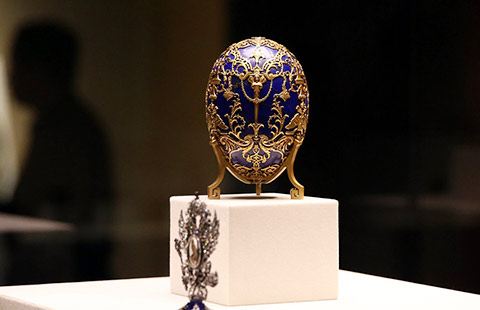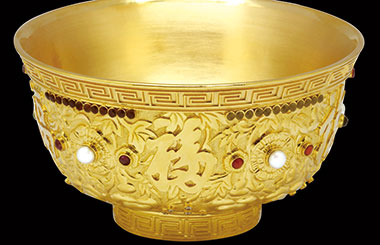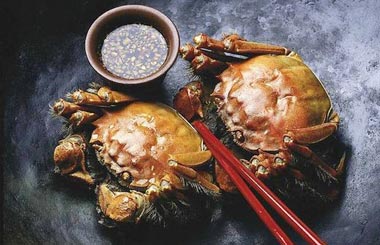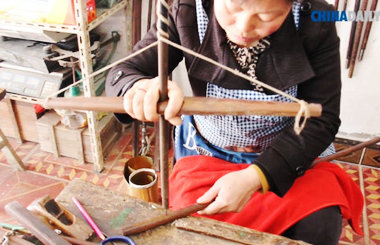Ancient handicrafts preserved in museum
By Bi Nan ( chinadaily.com.cn ) Updated: 2016-04-19 18:22:15
 |
|
An exquisite elephant made using the filigree and inlay technique is among the museum's collections. [Photo provided to chinadaily.com.cn] |
3. Where do the collections in the museum come from?
Sun Songlin: Currently, there are more than 100 artists signing contracts with our museum, which include national intangible cultural heritage inheritors, contemporary Chinese arts and crafts masters, presidents and directors from large calligraphy and art associations. We collect their award-winning pieces, masterpieces, orphan works and other precious works.
4. According to your view, what's the difference between Chinese museums and foreign museums in protecting and inheriting arts?
Sun Songlin: I think the biggest difference lies in the recognition of the public to its own country's arts. In Japan and many European countries, many treasures are inherited within families as heirlooms, and they are naturally incorporated with modern life. Thus representative treasures with distinctive national traits are passed down from generation to generation.
In China, the family inheritance has almost disappeared, and the previous generation doesn't have a culture of passing it down to the next generation. What we want to do is to cultivate people to use fine art to fulfill the missing part of modern families.
5. Do you have any suggestions on investing in art?
Sun Songlin: For art investment, people with better economic conditions can pay more attention to well-known artists, and collect their masterpieces. While for other people, they can keep an eye on contemporary young artists and invest on outstanding ones.
For entry-level collectors, they can take part in some art exhibitions and art sharing events more to cultivate connoisseurship. They can also communicate with some mainstream artists and get to know them more before making an investment. Connoisseurship comes from experience, so watch more and listen more.
|
|
|
|
|
|
|
|
























 Raymond Zhou:
Raymond Zhou: Pauline D Loh:
Pauline D Loh: Hot Pot
Hot Pot Eco China
Eco China China Dream
China Dream China Face
China Face





